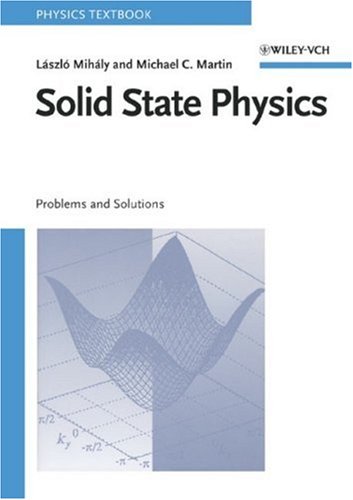Solid state physics: problems and solutions download
Par mitchell kimberly le lundi, juin 6 2016, 05:21 - Lien permanent
Solid state physics: problems and solutions. Laszlo Mihaly, Michael C Martin

Solid.state.physics.problems.and.solutions.pdf
ISBN: 0471152870,9780471152873 | 273 pages | 7 Mb

Solid state physics: problems and solutions Laszlo Mihaly, Michael C Martin
Publisher: Wiley-Interscience
Though I clearly recognized that the conventional nuclear scattering theory at positive energies cannot directly be applied to nuclear reactions involving deuterons bound in a metal, which is a negative-energy bound-state problem. Forgetting about quarks turns a 36-body problem into a 12-body problem, but with the strong nuclear force, electromagnetism and “higher-order” chiral forces acting between every particle, even this problem resists an exact solution. Some of the topics covered in the survey need to be updated but it laid the problems and their solutions out so clearly and beautifully. While I agree that there is a certain amount of prerequisite building that must go on in physics pedagogy, the problem is that the truly cool tends not to be integrated into the truly uncool even when it might be possible to do so. That was for the standard mechanics, E&M, quantum, and even solid state physics classes. Best practice due to my own limitations, but now I am appealing to a good friend- who is a world class specialist and authority in those branches of physics that are bound the very core of LENR, nuclear physics and solid state physics. The celebrated Schrödinger equation established a framework that allowed tackling a vast range of problems in atomic, molecular and solid state physics. All the numerical tests are carried out employing sequences of eigenproblems extracted from simulations of solid-state physics crystals. However In 1930, at a time when the interpretation of solutions to Dirac equation was still debated, Schrödinger noticed another peculiar feature: the equation admits solutions where the centre-of-mass of a quantum particle exhibits a trembling motion, called Zitterbewegung, in the absence of external forces [1]. Using supercomputers and new mathematical techniques, physicists are working to reveal how the Hoyle state atomic nucleus gives rise to the light elements that enable life, and how it drives the evolution of stars. Tags:Problems and solutions on solid state physics, relativity and miscellaneous topics, tutorials, pdf, djvu, chm, epub, ebook, book, torrent, downloads, rapidshare, filesonic, hotfile, fileserve.